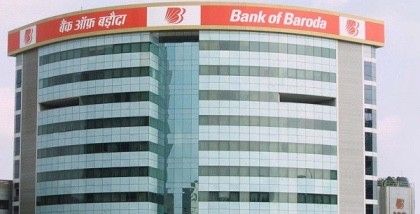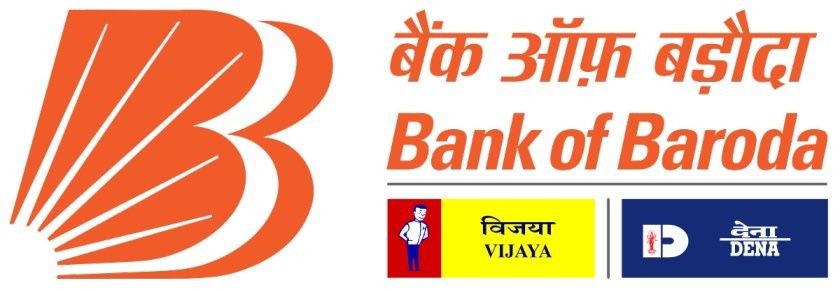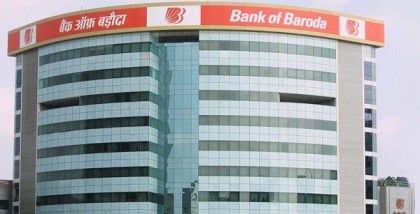About Bank of Baroda

On July 20, 1908, Maharaja Sayajirao Gaekwad III, the Maharaja of Baroda, established the Bank of Baroda.
The government of India nationalized the bank, along with 13 other major commercial banks in India, on July 19, 1969, and declared it as a profit-making public sector business (PSU).
It is now under the control of the Government of India’s Ministry of Finance. On September 17, 2018, the Indian government announced the merger of Bank of Baroda, Vijaya Bank, and Dena Bank to form the country’s second-largest lender. The merger is the country’s first three-way bank consolidation, with a combined business of Rs 14.82 trillion.

Its mission is to be a top-ranked National Bank of International Standards dedicated to increasing the value of stakeholders through concern, care, and competence.
Now that we’ve reviewed the company’s fundamentals, let’s look at Bank of Baroda’s S.W.O.T analysis in the section below.
SWOT Analysis of Bank of Baroda
A SWOT analysis resonates a company’s strengths, weaknesses, opportunities, and threats with those of its competitors.
It’s an excellent tool for identifying areas where the company excels and areas where it falters, devising countermeasures, and determining how the organization can grow. So, in the section below, we’ll look at Bank of Baroda’s SWOT analysis.
1. Strengths
Strengths are the distinguishing characteristics of an organization that provide it with a competitive advantage in increasing market share, attracting more customers, and maximizing profitability. Following are the Bank of Baroda’s strengths:
- Diversified branch network:
As India’s second-largest bank, Bank of Baroda has a diverse branch network mix that allows for low-cost resource mobilization. Bank of Baroda has over 5,330 branches across the country and has a presence in rural India with approximately 1,964 branches.
- Complete banking product portfolio:
Bank of Baroda offers a comprehensive range of banking services and financial products, many of which are used by its clients.
Bank of Baroda’s operations is supported by a number of government accounts. Railway pensioners, for example, receive their pension from Bank of Baroda accounts. Similarly, some government profiles require a government bank account in order to get a salary or pension, in which case the Bank of Baroda has an advantage over private banks.
As of March 31, 2016, the Bank of Baroda has a good capital adequacy ratio (CAR) of 13.2 per cent. The bank’s total assets were at INR 305,860 million. The bank’s solid capital position allows it to maintain its solvency levels even in the face of challenging market conditions.
Bank of Baroda is India’s 2nd largest bank, with a global market capitalization of INR 9,578,080 million as of March 31, 2016.
2. Weaknesses
Weaknesses in a company or brand are elements that must be improved. So, let’s look at some of Bank of Baroda’s major weaknesses:
- High Growth in Non-Performing Assets:
NPA growth is surpassing advances at the Bank of Baroda. BOB’s NPA was 9.9% of total advances in the Financial Year of 2016. The bank’s non-performing assets (NPA) have increased from 0.9 per cent in 2009 to 5% in 2016. NPA growth is outpacing the advantages of growth.
Bank of Baroda is among Asia’s top 25 banks, although it is overly reliant on its Indian market, accounting for 89.6% of total revenue. When compared to the top ten largest banks in Asia, BOB’s contribution of operations to revenue and earnings is quite low. The lack of a global presence increases the risk of doing business.
- Low brand equity being government banks:
Government banks have low brand equity since they advertise very little and only when funds are available. As a result, as compared to private banks, the bank has very poor brand equity. In terms of government banks, the brand equity of the State Bank of India and other state bank branches, as well as the Bank of India, is higher.
Several workers from the Bank of Baroda and HDFC have been caught up in a Forex scam throughout the years. Even the Reserve Bank of India sanctioned Bank of Baroda for a forex scam involving close to 6000 crores of rupees. Other scams involving bank workers were also reported. These hinder the trustworthy image in the minds of consumers.
3. Opportunities
Opportunities are areas where a company’s efforts can be focused to improve results, sales, and, eventually, profit. So, let’s take a look at the opportunities Bank of Baroda has, to deliver exceptional results.
- Favourable interest rate policies:
As India’s business confidence has improved, the RBI has transitioned from an expansionary (low interest) to a more calibrated monetary policy (high-interest rate). This will help Indian banks increase their net interest margins.
- Increasing technological adoption:
Online currency transactions are becoming more common, especially since demonetization and the creation of platforms like the BHIM app. BOB can increase the return on IT investment by boosting the adoption of E-transactions.
4. Threats
Threats are external factors that can impede a company’s growth. Some of Bank of Baroda’s threats are:
Due to the services provided and the superior functionality of private banks over government banks, private banks are a key competitor to government banks.
The Reserve Bank of India has authorized foreign banks to invest up to 74 per cent of their assets in Indian banks. This permits competition to raise capital from overseas banks while also putting pressure on India’s current large public and private sector banks.
Now that we’ve thoroughly examined the bank’s SWOT Analysis, let’s wrap up the case study.









